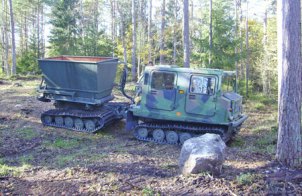| |
Wood ash recycling
|
|
| |
Since industrialization really took
off in the 1900s, coal and other fossil fuels has been used
for heating and electricity generation for the industry.
Polluting and acidifying sulfur emissions from industry for
decades has increased the acidification of forest soil, the
degradation of tree and animal living conditions.
Since the
1990s, environmental awareness has grown and less fossil
fuels is used and the purification of gas emissions has
become markedly better. Use of renewable fuels such as wood
chips and pellets has increased, replacing the fossil, thus
also affecting that the sulfur acidification and
CO2 emissions have decreased. Unbelievably good for the
environment. However the cars emissions and the acidifying
effects of increased withdrawals from the forest is still
there.
Now it has emerged a new problem that
must be solved to save the forest and let it be a renewable
fuel source. We need to compensate for the large amount of
wood and harvest residues (branches and tops) that are
removed from the forest. During bio-fuel harvesting and
timber production, nutrients are removed from the forests.
In the past, only the timber was harvested and branches and
tops were left to decompose, much of the nutrients were
re-circulated to the soil. In future forestry also stumps
might be recovered from the forest. If we continue along
this path the forest soils will be depleted of nutrients
resulting in lowered production and increased soil
acidification.
|
|
| |
But if
we return the nutrient rich ashes to the forest soil
we can harvest wood and residues at the current rate
and secure both a sustainable forestry and a high
energy production simultaneously.
|
|
| |
|
The recycling of ash from the
combustion of biomass fuels have been shown
to cause increased soil pH and nutrient
concentrations. If
you re-cycle the ashes, you return these
nutrients to the forests,
and thus close the nutrient cycle and
maintain a viable forest.
The Forestry Board recommends ash recycling.
It assumes that the ash comes from
combustion of pure wood pulp and not from
demolition waste. Normally 3 tonnes of ashes
are spread per hectare.
|
 |
|
|
|
How
does it work?
Ash producer and Askungen Vital AB signs a
reciprocal agreement where we manage the entire
chain from ash output until the ashes are out in the
woods. The ash is taken from the thermal plant or
sawmill to one of our storages.
The ashes needs to be stored for at least 3 months
in order to harden. During this process the ash
becomes less alkaline. When the ashes are hardened,
they are crushed and sieved to a grain fraction that
does not harm the trees at spreading and were the
dissolution rate of the grains in the forest soil is
optimal.
|
|
| |
 |
After
consultation with the Forestry Board the appropriate
stock is selected. The area are identified and the
treatment method and the volume of material is
determined.
The ash is loaded on swap cargo beds and transported
out to the forests. The ash spreader will meet up
with the swap cargo beds at the place were the ashes
are unloaded, before driving further into the
forest, where the truck fails to get through. Then
we spread it with one of our spreading machines.
|
|
|
| |
The landowner receive an analysis report on spread
material. This is obtained before or after
application. The National Board of Forestry has set
recommendations for
what the ashes must contain.
|
|
| |
Result?
Pretty immediately, the upper
part of the land will have an elevated pH, which
reduces the toxic effect of hydrogen and aluminum on
the tree roots. The administration of potassium and
trace elements absorbes by the trees, which benefit
the development and vitality.
|
|
| |
 |
|

